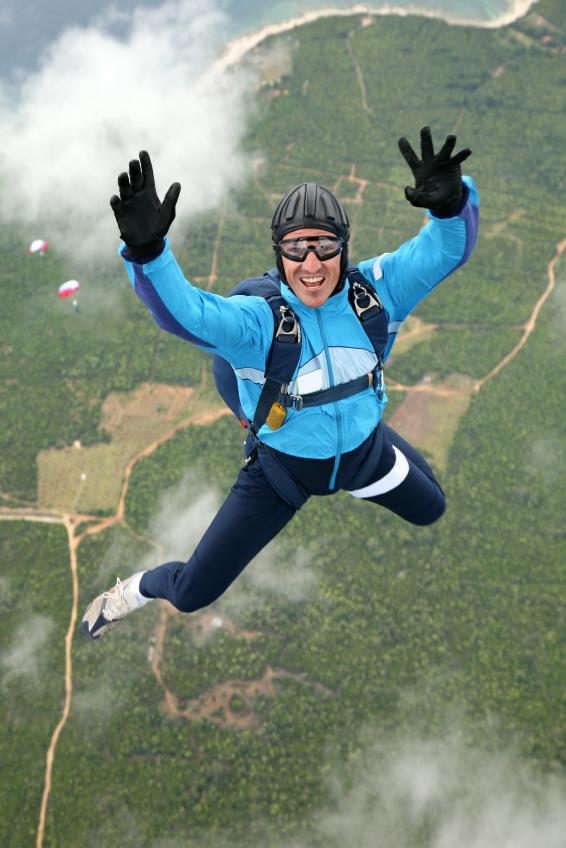What makes the skydiving dangerous? Perhaps everyone thought it was a risk of not opening. However, in his defense thesis at Umeå University, Sweden on March 27, Anton Westman said that the lack of body control skills and even in the air is more dangerous.
Both skydiving (jumping from aircraft) and BASE jumping (jumping from fixed objects), instability in free fall is the most dangerous factor. Jumping from an airplane into a strong wind is like jumping into a tight stream, and it is very likely that new learners will lose control and tumble in a new environment, which may lead to activation even though it is not stable. make the fiber string wrapped together and even if it is slow. When you jump from the edge of a cliff, the wind is not so strong, but this can also be a dangerous factor, because in the first few seconds you do not have help from strong winds to control and stabilize muscles can. Like skydiving, it is very likely that the parachute is slow or unstable. Another dangerous element of BASE jumping is the parachute wing that can open up in a way that gets you pushed towards the object you just jumped off.
The risk of death of skydiving in Sweden from 1994 to 2003 is about 1 death per 100,000 jumps. BASE jumping mortality rate is 60-90 times, so be careful when pursuing this activity.
 Skydiver in Losinj Island - Croatia. What is the most dangerous when parachuting? (Photo: iStockphoto / Drazen Vukelic)
Skydiver in Losinj Island - Croatia. What is the most dangerous when parachuting? (Photo: iStockphoto / Drazen Vukelic)
Parachute wings are formed in different ways for different types of parachutes. Although used in BASE jumping is designed for low-speed landing on uneven terrain, while in skydiving it is designed for reverse reasons, flying and landing at speeds of over 100 km per hour, like small gliders made from cloth. Skydiving requires judgment and skill of the user. The thesis shows that many injuries are the result of 'pilots' errors when jumping. In addition to calculating an incorrect landing time, parachute collisions also lead to injury and death.
Other fatal and non-fatal risks are also described in the thesis, with suggestions for each type. The three vulnerable parts include the legs, feet, river bones, and shoulder joints. New learners are at higher risk, but the most serious injuries happen to older skydivers. An interview study also offers a view of those who parachute to their risk of injury and their motivation to pursue the sport. The main reasons are recreational values and strong feelings.
 Green tea cleans teeth better than mouthwash?
Green tea cleans teeth better than mouthwash? Death kiss: This is why you should not let anyone kiss your baby's lips
Death kiss: This is why you should not let anyone kiss your baby's lips What is salmonellosis?
What is salmonellosis? Caution should be exercised when using aloe vera through eating and drinking
Caution should be exercised when using aloe vera through eating and drinking